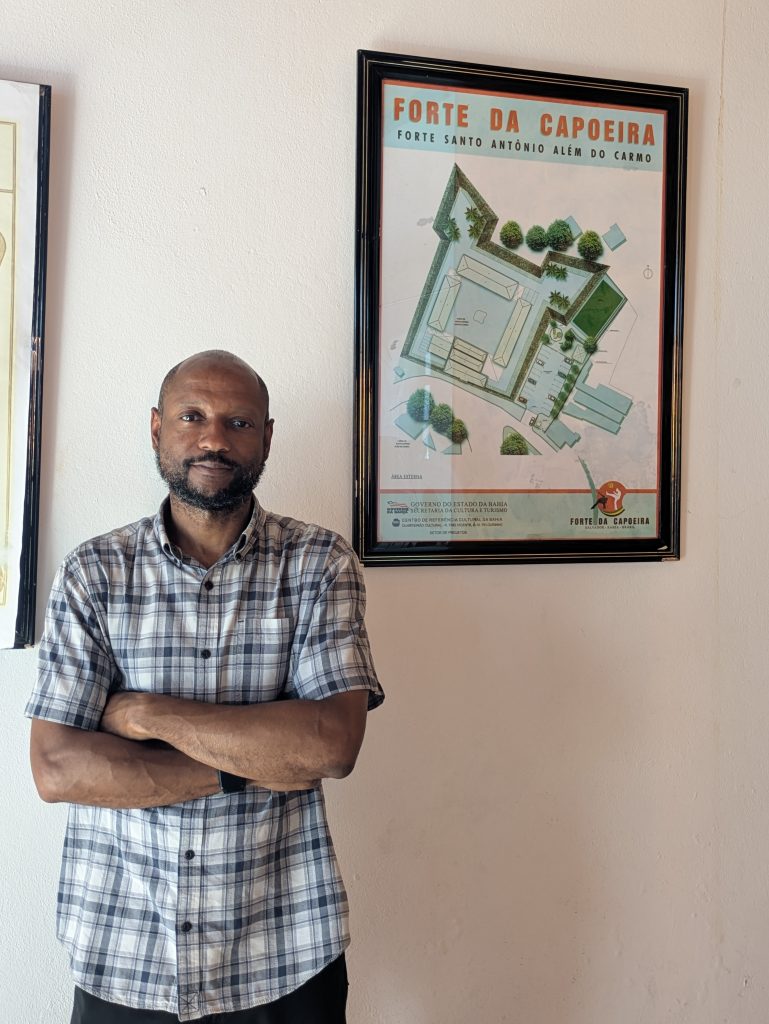I first met Ahati Kilindi Iyi in 2005. My encounter with him came after years of wanting to study the African fighting arts, but not being certain how. By this time I had studied Wing Chun, Choy Lay Fut, mixed martial arts, Kendo, and Kali. While I did feel confident in my training, that is in its practicality, what was lacking was a sense of connection to the fighting traditions of my ancestors.
So in April 2005, after watching his two video tapes “The World of African Martial Arts”, I decided to send him an email inquiring about additional training materials. In his response he told me about an upcoming martial arts training in June, which I was fortunate enough to be able to attend.
The camp was edifying, providing a great deal of clarity pertaining to things that I saw in his videos, while also exposing me to other arts—such as Capoeira Angola de Sao Bento Grande via Mestre Preto Velho. I returned from the camp energized, determined to continue to grow in the African fighting arts. I also continued to stay in contact with Ahati Kilindi.
Inspired by his example, I too sought to become an exponent of the African arts and in 2007 I was able to invite Ahati Kilindi to Saint Louis, Missouri where I was a sociology professor at Saint Louis Community College. This was the first of two programs that I coordinated in the hopes of exposing more members of our community to the African fighting arts.
Later that year I travelled to Detroit to attend his World African Martial Arts conference. It was a great opportunity to see the national and international community of scholars and practitioners interested in and devoted to the African arts.
In the ensuing years I would converse with him via social media and see him occasionally at conferences. The last time that I saw him was at the 2019 conference of the Association for the Study of Classical African Civilizations in Brooklyn, NY. We had an interesting conversation about African American styles of prison fighting. He told me about a Michigan prison, Jackson State Prison, that was renowned for being a hotbed of skilled fighters. He went on to link the popular expression “Jack you up” to the prison’s legacy.
In 2018 I helped to coordinate an interview with him via Abibitumi. It was a good dialog about the African combat arts and their revitalization and popularization today.
Ahati Kilindi Iyi was one of the people that gave me a foundation in the African arts. Two of the styles of stick-fighting that he taught continue to be foundational to my practice. What’s more, I have been able to share this and other knowledge pertaining to the African arts with youth in my community. I would impress upon them that these were our traditions, our combat arts, and that we should both cherish them and build upon the foundation that they represent. I would often think of Ahati Kilindi Iyi, inspired by his example, and contemplate ways that I could both continue to grow my knowledge of African combative traditions while also working to institutionalize these arts in our community.
His passing is truly a monumental loss for our community. It is as A. Hampâte Bâ said, that every time an elder dies, it is as if a library has burned to the ground. Ahati Kilindi Iyi was a cultural treasure, and it is most appropriate that we reflect on his legacy and seek ways to expand it and to build upon it by creating a place for the African martial arts in our communities globally.
Asante sana Ahati Kilindi Iyi for your many contributions to our cultural revitalization. We will seek to honor that legacy in both word and deed.
